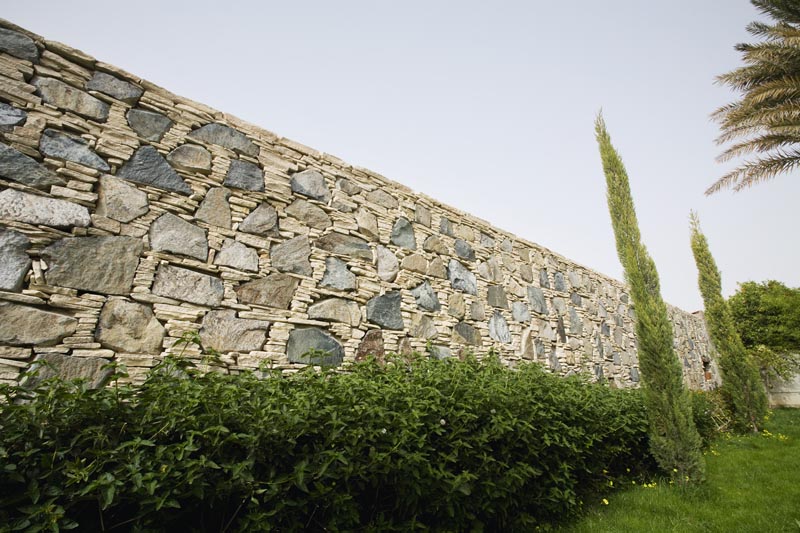
Are your hedges growing kind of crazy? Then trim them! The beauty of hedges depend on how well you maintain them.
Now, how to trim overgrown hedges? Read on for some tips.
Why People Grow Hedges
A hedge is a line of shrubs that are grown closely together to form an enclosure of sorts.
According to history, hedges were first grown some 5,000 years ago. These were used to fence cereal crops.
This leads us to one of the more popular reasons to grow a hedge:
Barriers
Millennia ago, hedges were used as a security barrier for crops.
In the United Kingdom and Ireland, hedges were also used to separate the fields from a road in medieval times.
You know
Some of those hedges still exist today. That means they have been alive for hundreds of years.
Of course
A lot of medieval hedges have been removed over the years.
Moving on
Hedges can also be used as your very own enclosure.

If you live in a safe neighborhood, then you don’t really need a fence or a high-end gate.
The hedge will add to your home’s beautiful exterior.
Beyond that
If you have a pool, then at least you will be covered by the hedge.
Then, if you have a party, at least you will also be separated from the rest of the neighborhood.
Moreover
If your neighbors have pets, the hedge will stop them from leaving unwanted matters in your yard.
When you have a hedge in your residence, it’s like hitting two birds with one stone:
- You’re beautifying your home
- You have your own natural gate
Fresh & clean air
A study from the Global Centre for Clean Air Research states that a hedge could reduce air pollution by 50%.
Isn’t that amazing?
It truly is!
The study theorized that leaf density has a hand in trapping pollutants that pass through.
Plus
We all know how important plants are in providing oxygen.
Covers imperfections
Perhaps you have an uneven landscape.
Or maybe you have a land imperfection that you need covered.
Hear me out:
The hedge would be a great way to cover unwanted ground components.
Not only that
If you have a wall that you wanted covered, the hedge can do that for you.
Did you notice?
Some low hedges are in close proximity to beautiful roses.
I’ve seen that partnership (rose and hedge) too many times.
Apparently
That’s because gardeners wanted to hide the roses’ naked stems.
This way, you’ll only see lush bush that seems to have sprouted colorful roses.
If you want to do the same, don’t limit yourself to roses. There are many other flowers that could take advantage of low hedges covering their stems.
Speaking of gardens.
Garden layout
Low hedges are really great at defining a garden.

What does this mean?
It means that you can neatly layout the garden with the use of the hedge as outline.
The hedge can outline the pathway as well as the plant-filled garden.
In essence
The hedge will beautifully accent the garden.
You need to remember this though:
The hedge will not properly do what it’s supposed to do if you don’t take care of it.
Things to Remember with Hedges
Hedges are only beautiful because people take care of them.
If they aren’t well taken care of, there is a tendency that it will grow wild–as in it will look wild.
That’s why
Take good care of your hedges.
Here are some tips that you should remember:
Get the right shape
This is something that you really have to think about.
When I say get the right shape, I mean the shape that is right for you!
Remember
You would have to live with this hedge for a long time.
The way you shape it will be with you for quite some time.
You know what you need?
Proper planning.
You should have the shape in mind before you start cutting away.
Here’s the thing:
If you just paint a picture in your mind, chances are you won’t get it right.
Make a plan and draw it!
Don’t worry
It’s not about how great you draw.
The drawing is just a map for you to guide your shaping activity.

Maintenance
New hedges will have to be pruned regularly so you can get the shape you want.
Complement that with proper maintenance like watering it regularly.
Note:
The first two years are crucial, so nourish them accordingly.
Water them and make sure the soil is always moist especially during dry months.
Weeding
Weed is bad news! It steals nutrients from your plants.
You should always make sure that there are no weeds trying to steal the nutrients of your hedge.
Do this regularly
If you don’t get the weeds at the earliest possible time, there is a tendency that they will cling on to the roots of the hedges.
That’s definitely bad news!
By then
It would be hard to take the weeds out without cutting off a root or roots.
When you don’t take it out, it will always compete with the plants in terms of getting nutrients from sunlight, water and fertilizer.

Trimming
When the hedge is new, you would have to trim it regularly.
This is necessary so that you could get the shape that you really want.
This leads us to the more important topic:
How to Trim Overgrown Hedges
Shaping the hedge is not just about aesthetics, although, that is certainly a large part of it.
Let me elaborate
Another reason why shaping the hedge is a good idea is because you want to spread sunlight all over the hedge.
That’s why, when you are trimming overgrown hedges, you should really follow a shape that you created when the hedges were still growing.
This way
The bottom of the hedge will have a chance to get sunlight as well.
Doing that will turn an even growth.
Now
If the bottom doesn’t get enough sunlight, they might die. What happens to the top when the base dies?
If it doesn’t die, it will turn brown, which means it is dying.
Then
You will have an ugly hedge.
One of the reasons the hedge is so great is because of its vibrant green color.

So, how do you trim overgrown hedges?
Here are some important tips:
1. Cut older stems
Use a pair of loppers in order to properly cut these older stems.
In order to properly do this: find the heaviest branches.
Then cut the lowest one back to the trunk.
The reason?
Pruning encourages growth.
By cutting the branch so that it will be back close to the stem, you are basically encouraging leaves to grow there.
Basically
You are making a dense foliage in that area.
When you do this to a lot of areas, imagine what happens.
2. Leave out new stems / growth
You want them to grow out their potential.

3. Find Y-shaped stems
You know how some stems branch out to two? Cut them close to the point where they branch out.
4. For overgrowth
Find long stems that are growing out of the hedge.
Cut them close to the ground.
Here’s the deal:
Use pruners for thin stems.
Confused?
Loppers are used for thick branches while pruners are for thin ones.
Stems growing out of the hedge are usually young ones, therefore, still quite thin.
You see
Pruning is mostly for young plants while trimming entails growth just needs to be tamed.
5. Make sure to follow the shape
If you want your hedge to grow out neatly, follow the shape.
It’s just trimming, not cutting–so be mindful!
Look:
You have to trim regularly because trimming allows robust new growth, which is exactly what we need in a hedge.
How often do you trim?
This is largely dependent on your hedge species.
However, the average is three times a year.
Not bad, right?
That’s the basic rule of thumb.
However, if you do see some branches or leaves out of place, there is nothing wrong with trimming them even if it’s not trimming season yet.
Of course
The three-times-a-year rule refers to older hedges.
As earlier mentioned, younger hedges need to be trimmed more. To keep the shape, you have to do more than just three times a year.

Summary
Hedges are beautiful, aren’t they? But they don’t just become beautiful by themselves. They need care and nurturing to retain their aesthetics.
One of the ways to truly maintain the hedge so that it will retain its shape and its lush color is through trimming. You trim so that you won’t have branches peeking out of the hedge. You want luscious leaves to make up your hedge. Not only that, you trim because you want the bottom of the hedge to enjoy sunlight as well.
How to trim overgrown hedges? You need to know what branches to trim to make sure that you have beautiful hedges all year round.
Useful Resources
- 13 Best Shrubs for Making Hedges – The Spruce
- Hardscaping 101: Hedges – Gardenista
- How Hedges Became the Unofficial Emblem of Great Britain – Smithsonian Magazine

